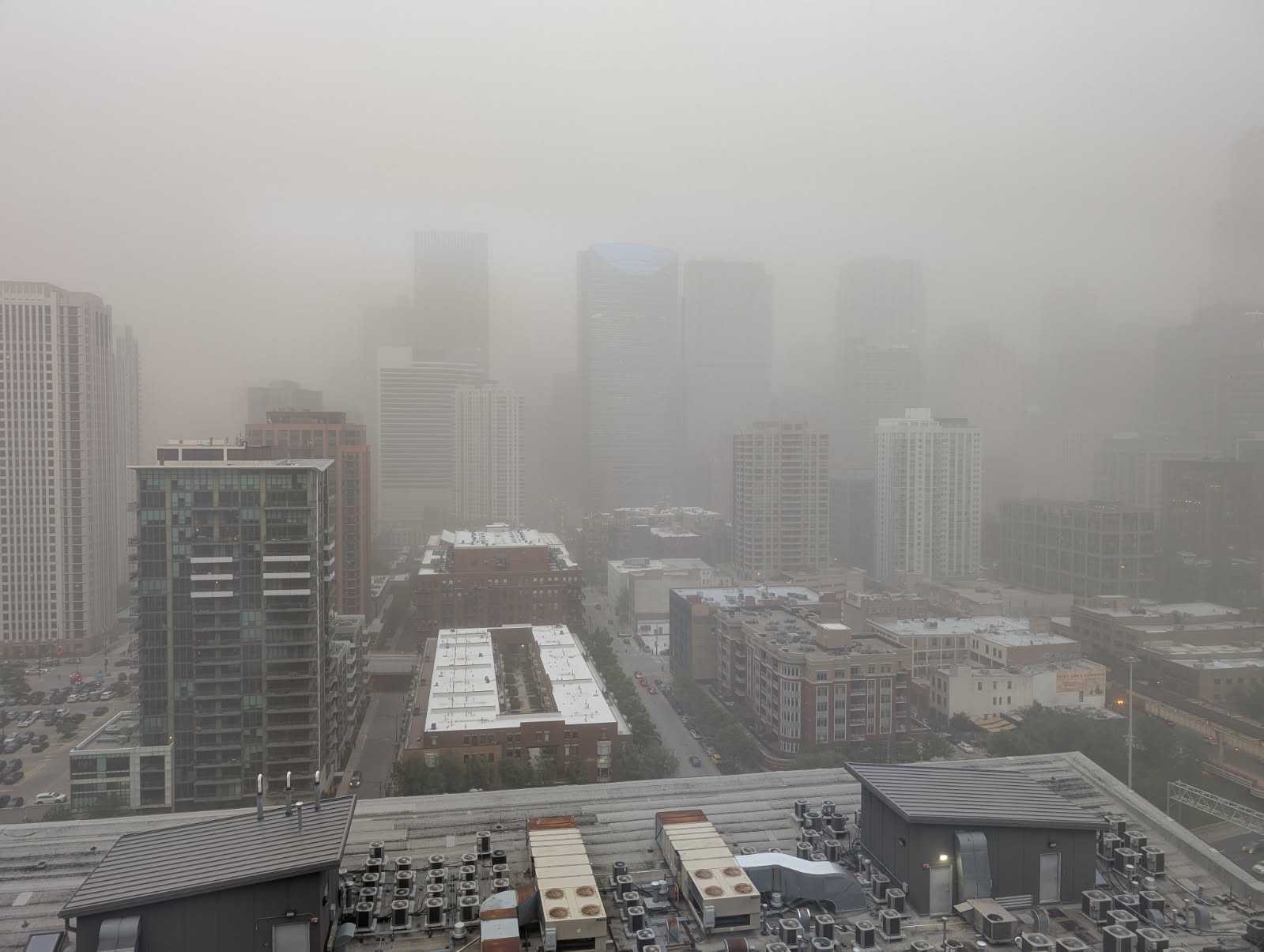On Friday, a massive dust storm hit the Chicago region, following a night of intense thunderstorms on Thursday that resulted in more than 100,000 residents losing their electricity.
Temperatures remained very warm on Friday, with gusty winds impacting the region throughout the day amid a threat of severe thunderstorms and fire-conducive conditions.
Throughout the day, powerful winds with isolated gusts up to 50 to 60 miles per hour led to the issuance of a Red Flag Warning, affecting areas that did not receive rain on Thursday.
While large-scale brush fires never materialized Friday, the dry conditions in areas not impacted by Thursday’s rainfall combined with the dangerous region-wide winds to create a blowing dust threat.
Though dust storms have impacted Illinois expressways before, Friday’s event marked a moment of history for the city of Chicago.
The dust storm created eerie sights throughout the city of Chicago, showing a normally majestic skyline nearly completely covered by the blowing dust.


Although dust storms are not very frequent in Illinois, they tend to occur during late spring. when they typically occur , where strong gusts carry away the fertile soil from freshly plowed lands over extensive areas.
A significant portion of the region's landscape is conducive to these storms because vast areas of open ground with sparse vegetation enable wind speeds to accelerate rapidly.
Apart from reducing visibility which leads to extremely dangerous driving conditions, these storms can also impact the area’s air quality for multiple days following their passage.
On Friday evening, air quality measurements in certain parts of the area showed levels over 100 AQI, which indicates they were "harmful to sensitive individuals."